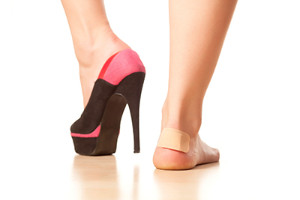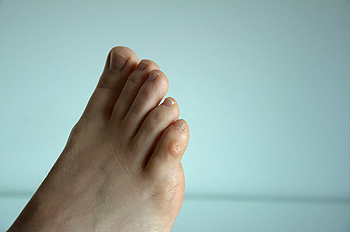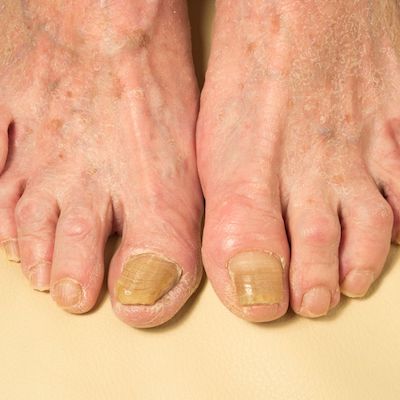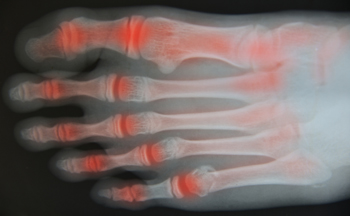Columbus: (614) 866-2477
Gahanna: (614) 939-9330
Lancaster: (740) 653-2656
Newark: (740) 344-8286
North Gahanna: (614) 478-2111
East Columbus: (614) 235-2323
Westerville: (614) 939-9330
Dublin: (614) 339-2000
Pickerington: (614) 545-4321
Lancaster: (740) 653-2656
Items filtered by date: May 2023
Arthritis Can Cause Pain in the Feet and Ankles
The Feet and Falling

Falls are serious. They are the second cause of unintentional injuries leading to death in the world. They can also cause permanent disability. As might be expected, seniors, especially women, incur the greatest number of falls. Aging people are less steady on their feet, and have other physical, cognitive, and sensory age-related changes that can make falling a more likely occurrence. Falls among those in this population can greatly interfere with mobility, quality of life, and independence. Additionally, many environments are not age friendly. Implementation of effective fall prevention strategies among seniors can save heartache in their limited years. These strategies can include having regular physical and eye examinations which can monitor existing medications and eyeglasses. It can also help to participate in an exercise program to maintain strength and stability, in addition to keeping households and outer doorways well lit. If you are a senior, it is suggested that you visit a podiatrist regularly for examinations and other tips on preventing falls.
Preventing falls among the elderly is very important. If you are older and have fallen or fear that you are prone to falling, consult with one of our podiatrists from Foot & Ankle Specialists of Central Ohio. Our doctors will assess your condition and provide you with quality advice and care.
Every 11 seconds, an elderly American is being treated in an emergency room for a fall related injury. Falls are the leading cause of head and hip injuries for those 65 and older. Due to decreases in strength, balance, senses, and lack of awareness, elderly persons are very susceptible to falling. Thankfully, there are a number of things older persons can do to prevent falls.
How to Prevent Falls
Some effective methods that older persons can do to prevent falls include:
- Enrolling in strength and balance exercise program to increase balance and strength
- Periodically having your sight and hearing checked
- Discuss any medications you have with a doctor to see if it increases the risk of falling
- Clearing the house of falling hazards and installing devices like grab bars and railings
- Utilizing a walker or cane
- Wearing shoes that provide good support and cushioning
- Talking to family members about falling and increasing awareness
Falling can be a traumatic and embarrassing experience for elderly persons; this can make them less willing to leave the house, and less willing to talk to someone about their fears of falling. Doing such things, however, will increase the likelihood of tripping or losing one’s balance. Knowing the causes of falling and how to prevent them is the best way to mitigate the risk of serious injury.
If you have any questions, please feel free to contact our offices located in Gahanna, Newark, Columbus, and Lancaster, OH . We offer the newest diagnostic and treatment technologies for all your foot care needs.
Consequences of Wearing High Heels

Many women have foot pain while wearing high heels, or soon after they are taken off. Falling episodes may be increased, and research has shown wearing this type of shoe can be a leading cause of foot problems among women. Hammertoe is a foot deformity that causes the second and third toes to bend at the middle joint and point downward. This can be a result of having inadequate room for the toes to move freely in. Many high-heeled shoes have pointed toes, providing less than ample room at the top of the shoe. A condition known as Morton’s neuroma can develop if the nerve between the third and fourth toes becomes compressed or irritated. It can also occur from the minimum room for the toes. Studies have shown the calf muscles may be affected when high heels are frequently worn, which may lead to chronic heel pain. If you would like more information about the possible dangers of wearing high heels, it is suggested that you speak with a podiatrist who can address any concerns you may have.
High heels have a history of causing foot and ankle problems. If you have any concerns about your feet or ankles, contact one of our podiatrists from Foot & Ankle Specialists of Central Ohio. Our doctors can provide the care you need to keep you pain-free and on your feet.
Effects of High Heels on the Feet
High heels are popular shoes among women because of their many styles and societal appeal. Despite this, high heels can still cause many health problems if worn too frequently.
Which Parts of My Body Will Be Affected by High Heels?
- Ankle Joints
- Achilles Tendon – May shorten and stiffen with prolonged wear
- Balls of the Feet
- Knees – Heels cause the knees to bend constantly, creating stress on them
- Back – They decrease the spine’s ability to absorb shock, which may lead to back pain. The vertebrae of the lower back may compress.
What Kinds of Foot Problems Can Develop from Wearing High Heels?
- Corns
- Calluses
- Hammertoe
- Bunions
- Morton’s Neuroma
- Plantar Fasciitis
How Can I Still Wear High Heels and Maintain Foot Health?
If you want to wear high heeled shoes, make sure that you are not wearing them every day, as this will help prevent long term physical problems. Try wearing thicker heels as opposed to stilettos to distribute weight more evenly across the feet. Always make sure you are wearing the proper shoes for the right occasion, such as sneakers for exercising. If you walk to work, try carrying your heels with you and changing into them once you arrive at work. Adding inserts to your heels can help cushion your feet and absorb shock. Full foot inserts or metatarsal pads are available.
If you have any questions please feel free to contact our offices located in Gahanna, Newark, Columbus, and Lancaster, OH . We offer the newest diagnostic and treatment technologies for all your foot and ankle needs.
Approximate Recovery Time for a Broken Foot

A broken foot is a common injury and may take up to several weeks for a full recovery. There are various degrees of a broken foot, which can range from a hairline fracture to a bone that is completely severed. It can occur as a result of falling, and a popping sound may be heard if the fracture is severe. Additionally, symptoms can include swelling and bruising at the time of the injury, a reduced range of motion, and it may be difficult, if not impossible to walk. A diagnosis is generally performed which can be done by having an X-ray taken. This is followed by beginning the right treatment, which can consist of wearing a walking boot or cast for several weeks. These methods are successful in keeping the affected foot stabilized as the healing process takes place. If you feel you have broken your foot, it is suggested that you contact a podiatrist as quickly as possible who can offer you relief and healing options.
A broken foot requires immediate medical attention and treatment. If you need your feet checked, contact one of our podiatrists from Foot & Ankle Specialists of Central Ohio. Our doctors can provide the care you need to keep you pain-free and on your feet.
Broken Foot Causes, Symptoms, and Treatment
A broken foot is caused by one of the bones in the foot typically breaking when bended, crushed, or stretched beyond its natural capabilities. Usually the location of the fracture indicates how the break occurred, whether it was through an object, fall, or any other type of injury.
Common Symptoms of Broken Feet:
- Bruising
- Pain
- Redness
- Swelling
- Blue in color
- Numbness
- Cold
- Misshapen
- Cuts
- Deformities
Those that suspect they have a broken foot shoot seek urgent medical attention where a medical professional could diagnose the severity.
Treatment for broken bones varies depending on the cause, severity and location. Some will require the use of splints, casts or crutches while others could even involve surgery to repair the broken bones. Personal care includes the use of ice and keeping the foot stabilized and elevated.
If you have any questions please feel free to contact our offices located in Gahanna, Newark, Columbus, and Lancaster, OH . We offer the newest diagnostic and treatment technologies for all your foot and ankle needs.
Dealing With Corns on the Feet

Corns on the feet are the result of continued pressure on the skin that causes it to thicken. The major culprit in the formation of a foot corn is improperly fitting shoes. A corn is most likely to form on the outside of the pinky toe, between the toes, or on the sole of the foot. If a nerve is pressured, or if the corn rubs against a bone, it may become painful. Other causes of corns are seams in a shoe that rub against the toe, having hammertoes or bunions, and having an abnormal gait. Changing footwear is the first way you can reduce the risk of developing corns on the feet. It is helpful to avoid shoes with a narrow and low toe box, wear socks that resist moisture, in addition to finding shoes that made of more flexible materials. Special pads that protect the area of the corn from friction are helpful in reducing pain and relieving pressure. Removing the corn is another treatment method, but it is best left to a podiatrist. If you have a particularly painful corn on the foot, it is suggested that you make an appointment with a podiatrist who can determine what the best treatment method is for you.
If you have any concerns regarding your feet and ankles, contact one of our podiatrists of Foot & Ankle Specialists of Central Ohio. Our doctors will treat your foot and ankle needs.
Corns: What Are They? and How Do You Get Rid of Them?
Corns can be described as areas of the skin that have thickened to the point of becoming painful or irritating. They are often layers and layers of the skin that have become dry and rough, and are normally smaller than calluses.
Ways to Prevent Corns
There are many ways to get rid of painful corns such as wearing:
- Well-fitting socks
- Comfortable shoes that are not tight around your foot
- Shoes that offer support
Treating Corns
Treatment of corns involves removing the dead skin that has built up in the specific area of the foot. Consult with Our doctors to determine the best treatment option for your case of corns.
If you have any questions please feel free to contact our offices located in Gahanna, Newark, Columbus, and Lancaster, OH . We offer the newest diagnostic and treatment technologies for all your foot and ankle needs.
Fungal Infection Awareness Month

May is Fungal Infection Awareness Month!
It's an important opportunity to raise awareness about infections that affect the toenails and feet and what you can do to prevent them. With summer just around the corner, it’s beneficial for all of us to be careful, especially as they can spread easily and quickly.
- Protect your feet - It's important to protect your feet, especially in public areas like the pool, fitness gyms, and locker rooms to avoid injuries and infections. Wearing water shoes or sandals can help keep your feet safe from sharp objects, hot surfaces, and bacteria.
- Practice good foot hygiene - It's important to take care of your feet by practicing good hygiene habits. This includes regularly washing and drying your feet, keeping your toenails trimmed straight across the top, and moisturizing your feet to prevent dryness and cracking. As you perform these steps, it’s important to take a good look over your feet and note any changes or abnormalities to bring up with a podiatrist.
- Wear clean and well-fitting shoes - Wearing shoes that fit well can help prevent foot pain and discomfort. It's recommended to choose shoes that have a thumb's width of space between the end of your longest toe and the tip of the shoe, and that fit snugly around the heel and midfoot.
- Wear clean socks - It's important to wear clean socks to maintain proper hygiene and prevent the spread of bacteria and odor. It’s also important to switch socks as soon as they get damp from sweat. Packing extra pair of moisture-wicking socks in your bag is useful.
- See a podiatrist - If you have trouble with foot hygiene tasks or notice changes to your skin or toenails, it’s a good idea to seek treatment from an expert podiatrist. At Foot and Ankle Specialists of Central Ohio, our team of board-certified podiatrists are dedicated to keeping your feet healthy and pain-free! From injuries, heel pain, diabetic foot issues, and infections, our foot doctors are equipped to handle any foot or ankle issue you may have.
Contact any of our 9 offices in the Central Ohio area to book an appointment!
Arthritis in the Toes

Arthritis can occur in any part of the body where joints exist. Since toes have many joints, this is a common place for arthritis to develop. Different types of arthritis can attack the toes, primarily osteoarthritis, rheumatoid arthritis, and gout. If the cartilage wears away between the bones in the toes, they will rub together and inflammation will occur. The big toe is the one most often affected. Past injuries, such as broken or sprained toes, can gradually cause arthritis. Aging, being overweight, and having a family history of arthritis are risk factors for this affliction. Symptoms of toe arthritis include pain, stiffness, and swelling. A clicking, popping, or a grinding noise can also be symptoms. Toe arthritis can cause difficulty with mobility. If you have toe pain, it is suggested that you consult with a podiatrist who can properly diagnose arthritis, and provide correct treatment options.
Arthritis can be a difficult condition to live with. If you are seeking treatment, contact one of our podiatrists from Foot & Ankle Specialists of Central Ohio. Our doctors can provide the care you need to keep you pain-free and on your feet.
Arthritic Foot Care
Arthritis is a term that is commonly used to describe joint pain. The condition itself can occur to anyone of any age, race, or gender, and there are over 100 types of it. Nevertheless, arthritis is more commonly found in women compared to men, and it is also more prevalent in those who are overweight. The causes of arthritis vary depending on which type of arthritis you have. Osteoarthritis for example, is often caused by injury, while rheumatoid arthritis is caused by a misdirected immune system.
Symptoms
- Swelling
- Pain
- Stiffness
- Decreased Range of Motion
Arthritic symptoms range in severity, and they may come and go. Some symptoms stay the same for several years but could potentially get worse with time. Severe cases of arthritis can prevent its sufferers from performing daily activities and make walking difficult.
Risk Factors
- Occupation – Occupations requiring repetitive knee movements have been linked to osteoarthritis
- Obesity – Excess weight can contribute to osteoarthritis development
- Infection – Microbial agents can infect the joints and trigger arthritis
- Joint Injuries – Damage to joints may lead to osteoarthritis
- Age – Risk increases with age
- Gender –Most types are more common in women
- Genetics – Arthritis can be hereditary
If you suspect your arthritis is affecting your feet, it is crucial that you see a podiatrist immediately. Your doctor will be able to address your specific case and help you decide which treatment method is best for you.
If you have any questions, please feel free to contact our offices located in Gahanna, Newark, Columbus, and Lancaster, OH . We offer the newest diagnostic and treatment technologies for all your foot care needs.
Blog Archives
- April 2024
- March 2024
- February 2024
- January 2024
- December 2023
- November 2023
- October 2023
- September 2023
- August 2023
- July 2023
- June 2023
- May 2023
- April 2023
- March 2023
- February 2023
- January 2023
- December 2022
- November 2022
- October 2022
- September 2022
- August 2022
- July 2022
- June 2022
- May 2022
- April 2022
- March 2022
- February 2022
- January 2022
- December 2021
- November 2021
- October 2021
- September 2021
- August 2021
- July 2021
- June 2021
- May 2021
- April 2021
- March 2021
- February 2021
- January 2021
- December 2020
- November 2020
- October 2020
- September 2020
- August 2020
- July 2020
- June 2020
- May 2020
- April 2020
- March 2020
- February 2020
- January 2020
- December 2019
- November 2019
- October 2019
- September 2019
- August 2019
- July 2019


